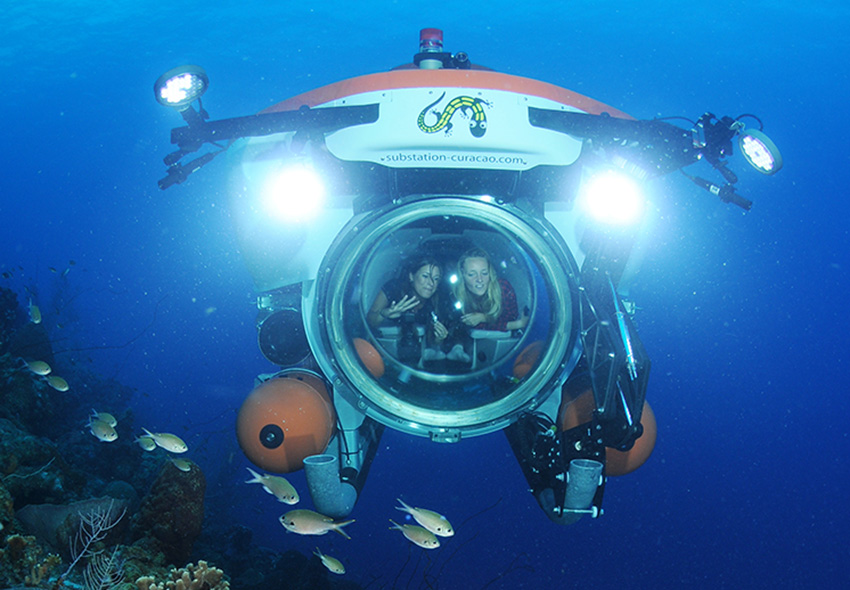Testing the Curasub
January 2015. The shallow reefs of the Caribbean are considered a biodiversity-hotspot, an area with exceptional diversity of plants, animals and ecosystems, yet surprisingly little is known about the flora and fauna of the deep reefs. It is expected that many new species to science will be found at these practically unexplored depths. The Ministry of Economic Affairs (EZ) has commissioned research institute IMARES Wageningen-UR to study the deeper reef as part of the exclusive Economic Zone management plan for the Dutch Caribbean.
Erik Meesters and Lisa Becking from IMARES Wageningen-UR will board the Curasub submarine, based at the Curaçao Sea Aquarium, to go down to depths of 300m. The exploration will go beyond the photic zone (+/- 200m) where creatures have found solution to life in the dark as well as to great pressure from a bulk of water. Using cameras and collecting biological specimens they will document this fascinating ecosystem and its unique biodiversity.
The collected species will be identified by taxonomists of the Zeeteam at Naturalis Biodiversity Center and the state of the art molecular lab of Naturalis will generate 'DNA-barcodes' to facilitate the identification. Detmer Sipkema of WUR will assess the microscopic diversity of microbes that are key to a variety of ecological processes.
The aim of the expedition is to gain a first assessment of the biodiversity of the deep reef of Bonaire. This information is essential to adequately protect the ecosystem and construct sustainable management plans. In order to protect biodiversity, we need to know what is down there and to gain an understanding what processes keep it in place. This expedition is the first dive into the unknown world of the deep reefs of Bonaire.
EXPEDITION DEEP REEF BONAIRE
MAY - JUNE 2013

ERIK MEESTERS
IMARES WAGENINGEN-UR

